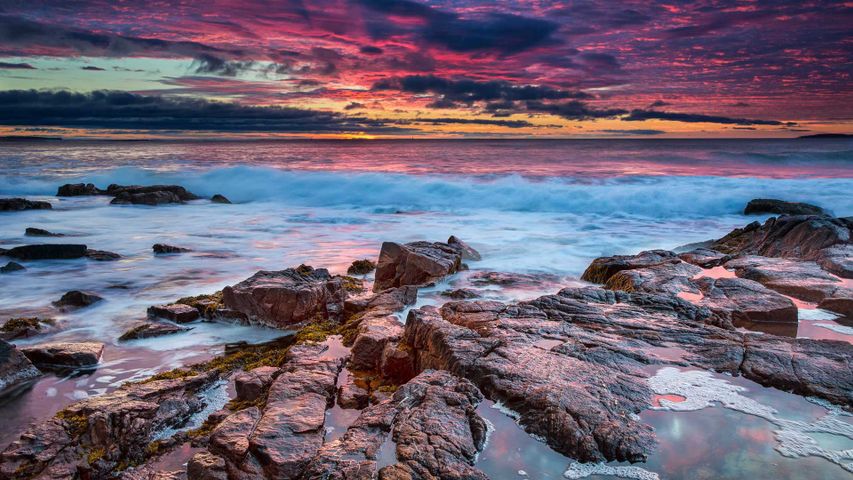Lamplugh Glacier in Glacier Bay National Park, Alaska, USA
© Andrew Peacock/Getty Image
Where glaciers meet the sea. Glacier Bay National Park and Preserve, Alaska, USA
Here in Glacier Bay National Park in the US state of Alaska, vast ice rivers carve the landscape and occasionally calve icebergs into the sea. Glaciers begin life high in the mountains, where vast amounts of snow pile up in depressions, compacted by the weight of more snow falling on top. Gradually the snow turns to ice and eventually begins to slide downhill – once it’s moving, it’s a glacier.
Lamplugh Glacier, pictured in our image, is one of the park’s famous tidewater glaciers – a glacier which has flowed all the way down to the sea. Its intense blue colour is caused when ice and water absorb the red wavelength of white light and transmit blue light back. The thicker and purer the ice, the bluer it appears.
There are approximately 1,000 glaciers in the park, but most are found inland. Those that make it this far face saltwater waves and tides which break off massive ice blocks up to 200ft high and send them crashing into the sea.
Related Images
Bing Today Images




 Yoho National Park, British Columbia, Canada
Yoho National Park, British Columbia, Canada
 View from the cupola of the International Space Station above the South Pacific Ocean
View from the cupola of the International Space Station above the South Pacific Ocean
 Polar bear cub, Churchill, Manitoba, Canada
Polar bear cub, Churchill, Manitoba, Canada
 Sandstone hoodoos, Bryce Canyon National Park, Utah, United States
Sandstone hoodoos, Bryce Canyon National Park, Utah, United States
 Red deer, Canada
Red deer, Canada
 Medieval towers in Mestia, Upper Svaneti, Georgia
Medieval towers in Mestia, Upper Svaneti, Georgia
 Ribblehead Viaduct and Ingleborough mountain, North Yorkshire, England
Ribblehead Viaduct and Ingleborough mountain, North Yorkshire, England


